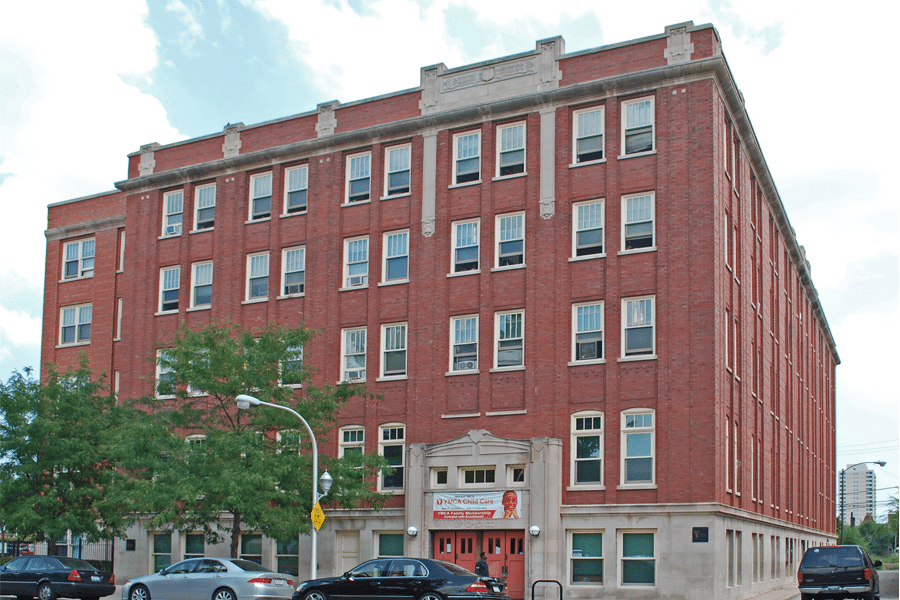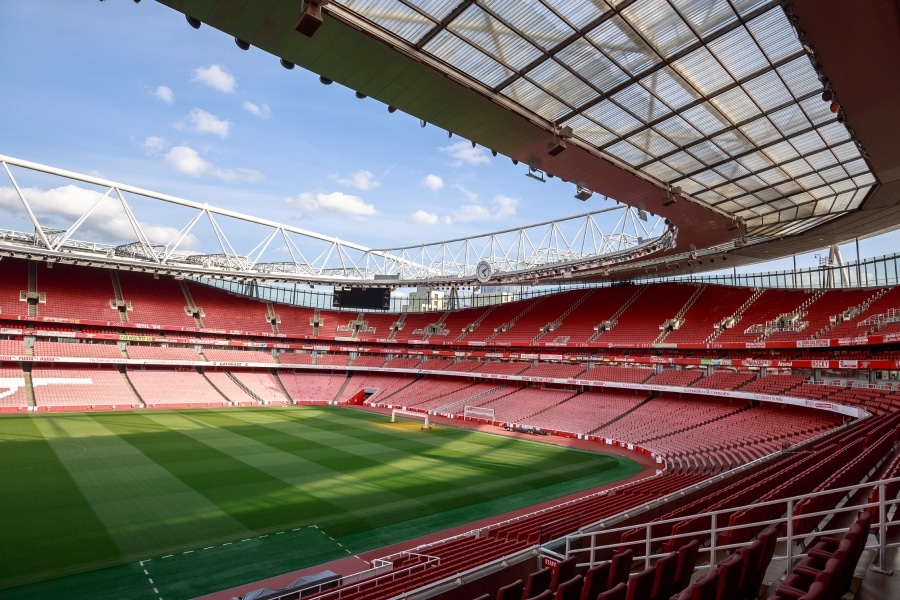Bronzeville is an often-overlooked part of Chicago, a city defined by its neighborhoods and known for its architecture.
Situated on the Near South Side, Bronzeville’s social and architectural history was first established in the late 19th century as a mix of mansions and row houses. Despite remnants of those days, Bronzeville’s dominant identity formed in the early 20th century as the “Black Metropolis.” With a significant population boom driven by the Great Migration of southern Blacks to northern states, this corner of Chicago became its epicenter of Black social, cultural and economic life.
Decline set in with the Great Depression and was further exacerbated by urban renewal efforts beginning after World War II. Today, Bronzeville’s architectural landscape is a mix of lost buildings, some replaced by new icons, other buildings left decaying, renovated buildings serving new roles in the community and fragments waiting to be revitalized.
One building lost—one building gained
The neighborhood experienced three major waves of urban renewal that pulled down a significant portion of the existing built environment. Michelangelo Sabatino, professor of architectural history and preservation at the Illinois Institute of Technology’s (IIT) College of Architecture and co-author of “Modern in the Middle: Chicago Houses 1929–75,” explains that, “During the height of urban renewal following World War II through to the early 1970s, several of Bronzeville’s residential and commercial buildings were torn down to make room for housing projects as well as the IIT campus with the hope that this educational institution would create educational and economic opportunities for Chicago and beyond.”
Aside from the high-rise housing projects, which have since been torn down, and the expansion of IIT, the third transformational wave was the construction of the Dan Ryan Expressway in the 1950s. To make way for the expressway, many Bronzeville residential buildings were torn down. Today, the Dan Ryan is Bronzeville’s western border. The expressway brought physical form to the segregation line between what were the white neighborhoods to its west and the Black neighborhoods to its east.
One of the residential buildings lost during this phase was the Mecca Flats, later immortalized by Gwendolyn Brooks in her book of poetry, “In the Mecca.” The Mecca Flats, at 34th and State Street, was constructed in 1892. It was known for its large central atrium and the ornate detailing of its railings and fixtures. While the atrium illuminated the interior, it also served as a social space where community flourished and secrets were few.
Sabatino said, “Even though the Mecca Flats was an architecturally significant building, its main significance was the social and cultural life contained within its walls. When Brooks wrote about the Mecca, it was because it really resonated as a building that was home for many people who felt displaced by its demolition.”
After falling into disrepair, IIT acquired the building in the 1940s and demolished it in 1952. Today, much of Flats’ old footprint is covered by S.R. Crown Hall, home to IIT’s College of Architecture. A national historic landmark, the building was designed by Ludwig Mies van der Rohe and completed in 1956. A large steel and glass boxed structure, the school says that its “column-free open plan of the main floor of Crown Hall demonstrates Mies’ innovative concept of creating universal space that can be infinitely adapted to changing use.”
Ward Miller, the Richard H. Driehaus executive director of Preservation Chicago, both laments the loss of the Flats and recognizes the layered stack of architectural history. Miller said, “The Mecca Flats was a stellar building that fell into terrible disrepair as the Illinois Institute of Technology continued its expansion. At least we have an amazing structure on part of the Mecca Flats site. Sometimes you end up replacing a good building with another good building. So maybe there’s some balance there.”
Old buildings renewed
While many Bronzeville buildings were brought down, others remain important sites in the neighborhood. There are nine landmarked structures in the historical district, one of which is the Chicago Bee Building, designed by Z. Erol Smith and completed in 1931. The Art Deco-style building was built as a mixed-use building commissioned by Black lawyer and entrepreneur Anthony Overton, the founder of the Chicago Bee newspaper.
RELATED:
The Bee had its headquarters there, along with other businesses owned by Overton and other Black entrepreneurs, while the top floor of the three-story building was residential. The building is known for its green terra cotta exterior of the top two floors and the intricate details across the facade. It was vacant for several years before the city bought it. The Bee Building was renovated in 1996 and now serves the community as a branch of the Chicago Library.
Unity Hall is one of the neighborhood’s older buildings. It was built in 1887 as the Lakeside Club, a social club serving the local Jewish community. Architect L. B. Dixon designed it in the Queen Anne style, with rows of arched windows and a pressed brick exterior. The building changed hands in 1917, when it was renamed Unity Hall by Oscar Stanton De Priest, the first Black alderman in Chicago. De Priest used it as the home of a political organization he founded, the People’s Movement Club.
Other political and community organizations operated from Unity Hall through the 1950s, as suited its assembly hall and useful smaller rooms. Various churches occupied it until the 1970s. From there, the building was vacant and decaying.
Despite being protected as a landmark, there was concern that the building’s neglect would ultimately result in its demolition. In 2012, Preservation Chicago added Unity Hall to its “Chicago 7” list of most threatened buildings in the city. Miller explained the organization’s work on behalf of Unity Hall, “We were fearful that the building could be in structural danger. You just don’t want these structures to be vacant too long. We definitely encourage that these types of buildings be re-engaged and reused as soon as possible.” In 2014, the building was approved for development as student housing. As part of the renovation project, its facade has been restored to its original design.
The Wabash YMCA, a five-story building with concrete frame construction and a dark pressed brick facade with buff Bedford limestone trim, is also designated a national landmark. Completed in 1913, it was built to provide housing, social and economic support to Black southerners coming to Chicago during the Great Migration. Black historian Dr. Carter G. Goodson founded the Association of African American Life and History there in 1915 after being denied entry to the American Historical Association conferences. The Wabash Y is also where Goodson first established Negro History Week in 1926, the precursor to today’s Black History Month.
With its expansion in 1945, done in keeping with the original design, the Wabash YMCA grew as a major community center. The Y was largely abandoned in the 1970s and began decaying due to neglect. The building has since been taken over and restored by the Renaissance Collaborative, a Bronzeville-based social organization. The Wabash Y is open again, fulfilling its role as a community center. Public tours of the building are held once a month.
Buildings and sites waiting for revival
Bronzeville is attracting more attention from the city and developers since its designation as a historical district. Ground was broken in March 2023 to launch the development of the Bronzeville Lakefront district. Described by its developers as a “mixed-use health innovation district,” the $3.8 billion, 14-year project is on the site of the old Michael Reese hospital and some surrounding land, totaling around 100 acres.
Yet, other areas of Bronzeville still suffer from neglect, with important pieces of the neighborhood’s cultural and architectural historical legacy at risk. A recent fire in Bronzeville, which injured three, also destroyed a vacant greystone built in 1886. In 2006, a fire destroyed most of the Pilgrim Baptist Church, a designated Chicago landmark and considered the birthplace of gospel music. The structure was built in 1891 as a synagogue, designed by Adler & Sullivan. Only some exterior stone walls remain after the fire, and the southern wall was further damaged by storm winds in August 2022.
For years there have been talks to redevelop the site, with the stone walls intact, as a national museum of gospel music. Those plans haven’t moved forward and 16 years later, the walls surround an empty lot, supported by a metal frame. Miller warns about the longevity of the remaining walls. “We don’t want another disaster like that to destroy the landmark entirely. It’s critical we find a reuse plan as happened for Unity Hall.”













